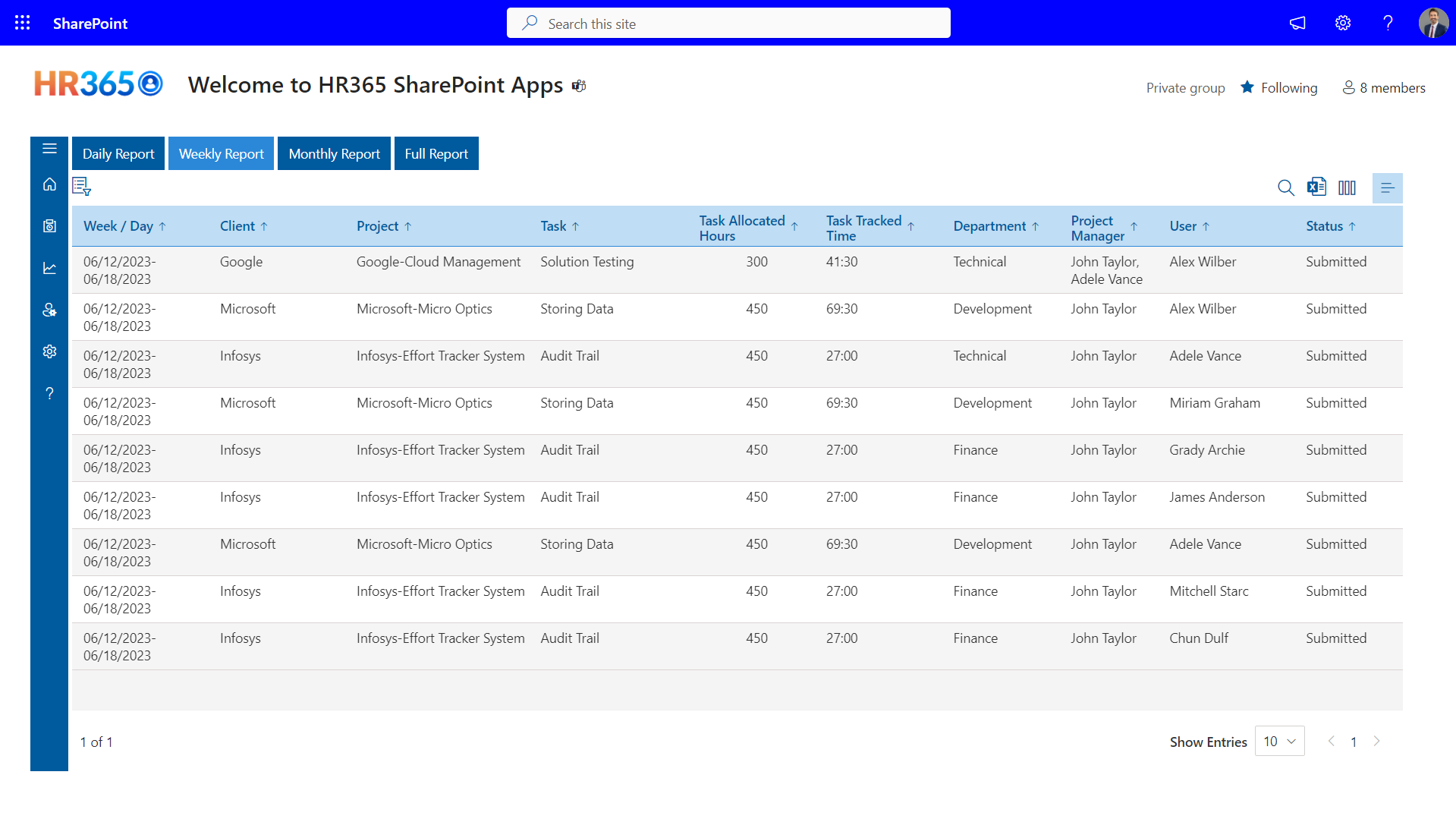Employee time tracking software
Check out the best way to increase productivity with a thorough understanding of employee time tracking software.
What is employee time tracking software?
Employee time tracking software is a digital tool designed to help businesses monitor and manage the working hours of their employees. It automates the process of tracking time worked, making it easier for employers to accurately record attendance, track productivity, manage payroll, and comply with labor regulations.
Features to Look for in Employee Time Tracking Software
When selecting employee time tracking software for your business, it’s essential to consider various features that can meet your specific needs and improve efficiency in managing workforce time. Here are some key features to look for:
- Ease of Use: Choose software with an intuitive user interface that is easy for both employees and managers to navigate. The time tracking process should be straightforward, allowing employees to clock in and out effortlessly.
- Multiple Clock-in/Clock-out Methods: Look for software that supports various methods of clocking in and out, such as web-based time clocks, mobile apps, biometric scanners, or traditional time clocks. This flexibility accommodates different work environments and preferences.
- Customizable Timesheets: Ensure the software offers customizable timesheets that can capture essential details like regular hours, overtime, breaks, and time off. The ability to customize timesheets allows you to align them with your business’s specific requirements and reporting needs.
- Project and Task Tracking: Opt for software that allows employees to allocate their time to specific projects, tasks, or clients. This feature enables managers to track project progress accurately and allocate resources efficiently, especially for businesses that bill clients based on hours worked.
- Reporting and Analytics: Look for robust reporting and analytics capabilities that provide insights into employee productivity, attendance patterns, project costs, and labor expenses. Customizable reports allow you to analyze data and make informed decisions to optimize workforce management.
- Integration with Payroll Systems: Choose software that seamlessly integrates with your existing payroll system or offers built-in payroll processing capabilities. Integration streamlines the process of calculating wages, overtime, bonuses, and other compensation based on hours worked, reducing manual errors and administrative overhead.
- Compliance Features: Ensure the software includes features to help your business comply with labor laws and regulations regarding overtime, break times, and recordkeeping. This ensures that your business maintains legal compliance and avoids penalties for non-compliance.
- Mobile Accessibility: Consider software that offers mobile apps or mobile-responsive web interfaces, allowing employees to clock in and out, track time, and access timesheets from anywhere using smartphones or tablets. Mobile accessibility is especially beneficial for remote workers or employees working in the field.
- Scalability and Flexibility: Choose software that can scale with your business as it grows and offers flexibility to accommodate changes in workforce size, structure, and needs. Scalable and flexible solutions ensure that your time tracking software remains effective and relevant over time.
- Security and Data Privacy: Prioritize software that implements robust security measures to protect sensitive employee data and ensures compliance with data privacy regulations. Look for features such as data encryption, role-based access control, and regular security updates to safeguard your data against unauthorized access or breaches.
By considering these features when evaluating employee timesheet software, you can select a solution that meets your business’s requirements, improves efficiency, and enhances workforce management processes.
Benefits of Using Employee Timesheet Software
Employee time tracking software offers numerous benefits for businesses of all sizes and industries. Here are some of the key advantages:
- Accurate Time Tracking: Employee time tracking software ensures accurate recording of work hours, reducing errors and discrepancies in payroll processing. This accuracy helps businesses avoid overpaying or underpaying employees, leading to cost savings and improved financial management.
- Increased Productivity: By tracking employee time and attendance, businesses can identify inefficiencies, monitor productivity levels, and address issues that may be hindering performance. Time tracking software provides insights into how time is spent on tasks and projects, allowing managers to optimize workflows and allocate resources more effectively.
- Streamlined Payroll Processing: Time tracking software automates the process of collecting, calculating, and processing employee hours, reducing the time and effort required for payroll administration. Integration with payroll systems ensures accurate calculation of wages, overtime, and other compensation, minimizing errors and delays in payroll processing.
- Improved Accountability: With transparent and accurate time tracking data, employees are held accountable for their time and attendance. This accountability fosters a culture of responsibility and encourages employees to adhere to work schedules, deadlines, and performance expectations.
- Better Resource Allocation: Time tracking software enables businesses to allocate resources more efficiently by identifying underutilized or overutilized capacity. Managers can assess workload distribution, balance workloads among team members, and allocate resources based on project needs, leading to improved project management and resource optimization.
- Compliance with Labor Laws: Time tracking software helps businesses comply with labor laws and regulations regarding overtime, break times, and recordkeeping. Automated tracking and reporting features ensure that businesses accurately record and report employee hours, reducing the risk of non-compliance and associated penalties.
- Enhanced Client Billing: For service-based businesses, time tracking software facilitates accurate client billing by tracking billable hours spent on projects or tasks. Businesses can generate detailed invoices based on actual hours worked, ensuring transparency and accuracy in client billing processes.
- Remote Work Management: In today’s increasingly remote work environment, time tracking software provides visibility and accountability for remote employees. Mobile accessibility allows employees to clock in and out, track time, and submit timesheets from anywhere, enabling businesses to effectively manage remote teams and track their productivity.
- Data-Driven Insights: Time tracking software provides valuable data and insights into employee productivity, attendance patterns, project costs, and labor expenses. Customizable reports and analytics enable businesses to make informed decisions, identify trends, and implement strategies for improving workforce management and performance.
Employee time tracking software offers numerous benefits, including improved accuracy, productivity, payroll processing, accountability, compliance, resource allocation, client billing, remote work management, and data-driven insights. By leveraging these benefits, businesses can streamline their operations, enhance efficiency, and achieve better outcomes.
Choosing the Right Employee Time Tracking Software for Your Business
Choosing the best employee time tracking software for your business is crucial for efficient workforce management, accurate payroll processing, and compliance with labor regulations.
Here’s a guide to help you select the best software for your specific needs:
- Assess Your Business Requirements: Begin by identifying your business’s specific time tracking needs and objectives. Consider factors such as the size of your workforce, the nature of your business operations, your industry requirements, and any unique compliance considerations.
- Define Key Features and Functionality: Based on your business requirements, outline the key features and functionality you need in a time tracking software solution. Consider factors such as clock-in/clock-out methods, timesheet customization, project/task tracking, payroll integration, reporting/analytics capabilities, mobile accessibility, and compliance features.
- Research Available Solutions: Research and evaluate different time tracking software solutions available in the market. Consider factors such as user reviews, ratings, feature comparisons, pricing models, and customer support options. Look for software vendors that have a proven track record, a good reputation, and experience serving businesses similar to yours.
- Consider Scalability and Flexibility: Choose a time tracking software solution that can scale with your business as it grows and offers flexibility to adapt to changing workforce needs and business requirements. Scalable and flexible solutions ensure that your time tracking software remains effective and relevant over time.
- Evaluate Integration Capabilities: Assess the integration capabilities of time tracking software with other systems and tools used in your business, such as payroll systems, project management software, HRIS (Human Resources Information Systems), and accounting software. Integration ensures seamless data exchange and workflow automation, reducing manual effort and errors.
- Review Security and Compliance Features: Prioritize time tracking software solutions that prioritize security and compliance with data privacy regulations. Look for features such as data encryption, role-based access control, audit trails, and compliance with industry-specific regulations (e.g., GDPR, HIPAA). Ensure that the software helps you maintain compliance with labor laws and regulations regarding time tracking, overtime, and recordkeeping.
- Consider User Experience and Support: Choose a time tracking software solution with an intuitive user interface that is easy for both employees and managers to use. Consider factors such as training and onboarding resources, customer support options, and user feedback mechanisms. Look for vendors that offer responsive customer support and ongoing software updates and improvements.
- Trial and Test: Before making a final decision, consider trialing or testing the time tracking software solution to evaluate its usability, functionality, and compatibility with your business processes. Take advantage of free trials, demos, or pilot projects to assess how well the software meets your needs and expectations.
- Calculate Total Cost of Ownership (TCO): Consider the total cost of ownership (TCO) of the time tracking software solution, including upfront costs, subscription fees, implementation costs, training expenses, and ongoing maintenance and support fees. Compare the TCO of different solutions to determine the most cost-effective option for your business.
- Seek Feedback and Recommendations: Finally, seek feedback and recommendations from colleagues, industry peers, and trusted advisors who have experience with time tracking software. Their insights and recommendations can help you make a more informed decision and avoid potential pitfalls.
By following these steps and considerations, you can choose the right employee time tracking software for your business that meets your specific needs, enhances efficiency, and improves workforce management processes.
How Employee Time Tracking Software Improves Productivity?
Employee hour tracking software plays a significant role in improving productivity in several ways:
- Accountability: By accurately tracking employee time and attendance, time-tracking software holds employees accountable for their work hours. When employees know their hours are being monitored, they are more likely to adhere to their schedules and stay focused on tasks, reducing time wasted on non-work-related activities.
- Time Management: Time tracking software provides employees with visibility into how they spend their time throughout the workday. This awareness helps them prioritize tasks, manage their workload more effectively, and allocate time to high-priority activities, leading to increased productivity and task completion rates.
- Identifying Time Wasters: Time tracking software helps identify inefficiencies and time-wasting activities in the work process. By analyzing time tracking data, managers can identify common distractions, bottlenecks, and productivity drains, allowing them to implement strategies to minimize or eliminate these issues and optimize workflow efficiency.
- Resource Allocation: With insights gained from time tracking data, managers can allocate resources more effectively, ensuring that tasks and projects are adequately staffed and resourced. By matching resources to workload demands, businesses can prevent burnout, reduce project delays, and improve overall productivity.
- Goal Setting and Monitoring: Time tracking software enables businesses to set clear goals and monitor progress towards those goals in real-time. By establishing targets for productivity and tracking employee performance against these targets, businesses can motivate employees to achieve their objectives and drive continuous improvement.
- Performance Measurement: Time tracking software provides valuable data for evaluating employee performance and identifying top performers. By analyzing time tracking data alongside key performance indicators (KPIs), managers can identify areas for improvement, provide targeted feedback and coaching, and recognize and reward high-performing employees, fostering a culture of accountability and productivity.
- Project Management: Time tracking software integrates with project management tools to provide visibility into project progress, resource utilization, and budget tracking. By tracking time spent on specific tasks and projects, managers can identify project bottlenecks, allocate resources efficiently, and ensure projects are completed on time and within budget.
Employee time tracking software empowers businesses to improve productivity by fostering accountability, enhancing time management practices, identifying and eliminating time-wasting activities, optimizing resource allocation, setting and monitoring goals, measuring performance, and facilitating efficient project management. By leveraging the insights and capabilities of time tracking software, businesses can drive productivity gains and achieve better outcomes.
Employee Time Tracking Software for Different Industries
Employee timesheet software serves as a valuable tool for businesses across various industries, helping them effectively manage workforce time, streamline operations, and enhance productivity. Here’s how employee time tracking software can be tailored to meet the specific needs of different industries:
1) Healthcare Industry:
- In healthcare settings, time tracking software helps monitor employee attendance, including nurses, doctors, and support staff working in shifts.
- It ensures compliance with healthcare regulations regarding work hours, break times, and overtime for staff members.
- Time tracking software can be integrated with patient management systems to accurately track time spent on patient care activities and billing.
2) Manufacturing Industry:
- In manufacturing facilities, time tracking software helps track employee attendance, including workers on the production floor and in administrative roles.
- It facilitates tracking of labor hours for cost estimation, project management, and payroll processing.
- Time tracking software can integrate with production systems to capture time spent on specific tasks or projects, optimizing resource allocation and improving production efficiency.
3) Retail Industry:
- In retail businesses, time tracking software helps monitor employee schedules, including sales associates, cashiers, and store managers.
- It facilitates tracking of employee hours for payroll processing, including overtime and commission-based pay.
- Time tracking software can integrate with point-of-sale (POS) systems to correlate employee hours with sales data, helping businesses analyze employee productivity and customer service effectiveness.
4) Hospitality Industry:
- In hotels, restaurants, and hospitality businesses, time tracking software helps manage employee schedules for various roles, such as front desk staff, housekeeping, and kitchen staff.
- It enables tracking of employee hours for payroll processing, including tips and gratuities.
- Time tracking software can integrate with reservation and booking systems to align employee schedules with customer demand and optimize staffing levels.
5) Professional Services Industry:
- In professional services firms, such as law firms, accounting firms, and consulting agencies, time tracking software is essential for tracking billable hours spent on client projects.
- It facilitates accurate client billing by tracking time spent on specific tasks or projects and generating detailed invoices.
- Time tracking software can integrate with project management and accounting systems to streamline project tracking, invoicing, and financial reporting.
6) Construction Industry:
- In construction companies, time tracking software helps monitor employee hours for construction workers, project managers, and administrative staff.
- It facilitates tracking of labor hours for cost estimation, project management, and payroll processing, including tracking of equipment usage and subcontractor hours.
- Time tracking software can integrate with project management and accounting systems to align labor costs with project budgets and timelines.
- Employee time tracking software can be customized and adapted to meet the unique needs of different industries, helping businesses improve workforce management, streamline operations, and achieve greater efficiency and profitability.
Conclusion
In conclusion, implementing employee time tracking software, such as Timesheet 365, offers businesses a comprehensive solution to effectively manage workforce time, streamline operations, and enhance productivity. With Timesheet 365’s intuitive interface and customizable timesheets, businesses can accurately record employee hours, monitor attendance, and track project progress. Businesses in a variety of industries can increase productivity and profitability by optimizing resource allocation, enhancing accountability, and achieving better results by utilizing Timesheet 365’s capabilities.
Frequently Asked Questions
Employee time tracking software typically allows employees to clock in and out using various methods such as web-based time clocks, mobile apps, or biometric scanners. The software records employee hours and generates digital timesheets that display the hours worked, breaks taken, and time off. Managers can then review and approve timesheets, generate reports, and integrate the data with payroll systems for processing.
Yes, employee time tracking software is suitable for remote teams. Many time tracking solutions offer mobile apps or web-based interfaces that allow remote employees to clock in and out, track time, and submit timesheets from anywhere. This enables businesses to effectively manage remote teams, track productivity, and ensure accurate payroll processing.
Employee time tracking software helps businesses comply with labor laws and regulations regarding overtime, break times, recordkeeping, and more. It automates the process of tracking and recording employee hours, generates accurate timesheets, and provides reporting and analytics capabilities to ensure compliance with regulatory requirements.
Schedule a free personalized 1:1 demo
By proceeding, you accept Cubic Logics’s terms and conditions and privacy policy






Start Your Free Experience
By proceeding, you accept Cubic Logics’s terms and conditions and privacy policy






Schedule a free personalized 1:1 demo
By proceeding, you accept Cubic Logics’s terms and conditions and privacy policy






Try It Free, No Obligation
By proceeding, you accept Cubic Logics’s terms and conditions and privacy policy






Don't leave yet,
get up to 30% special offer until 1st January 2026,
Enter your business email ID and we will send a personalized coupon code straight to your inbox.
Request for the Custom Price
By proceeding, you accept Cubic Logics Terms and Conditions and Privacy Policy
Request of the Free License
By proceeding, you accept Cubic Logics Terms and Conditions and Privacy Policy
Offer is expiring soon!
Fill in your details below to receive your personalized coupon code.
Start Your Free Experience
By proceeding, you accept Cubic Logics’s terms and conditions and privacy policy







